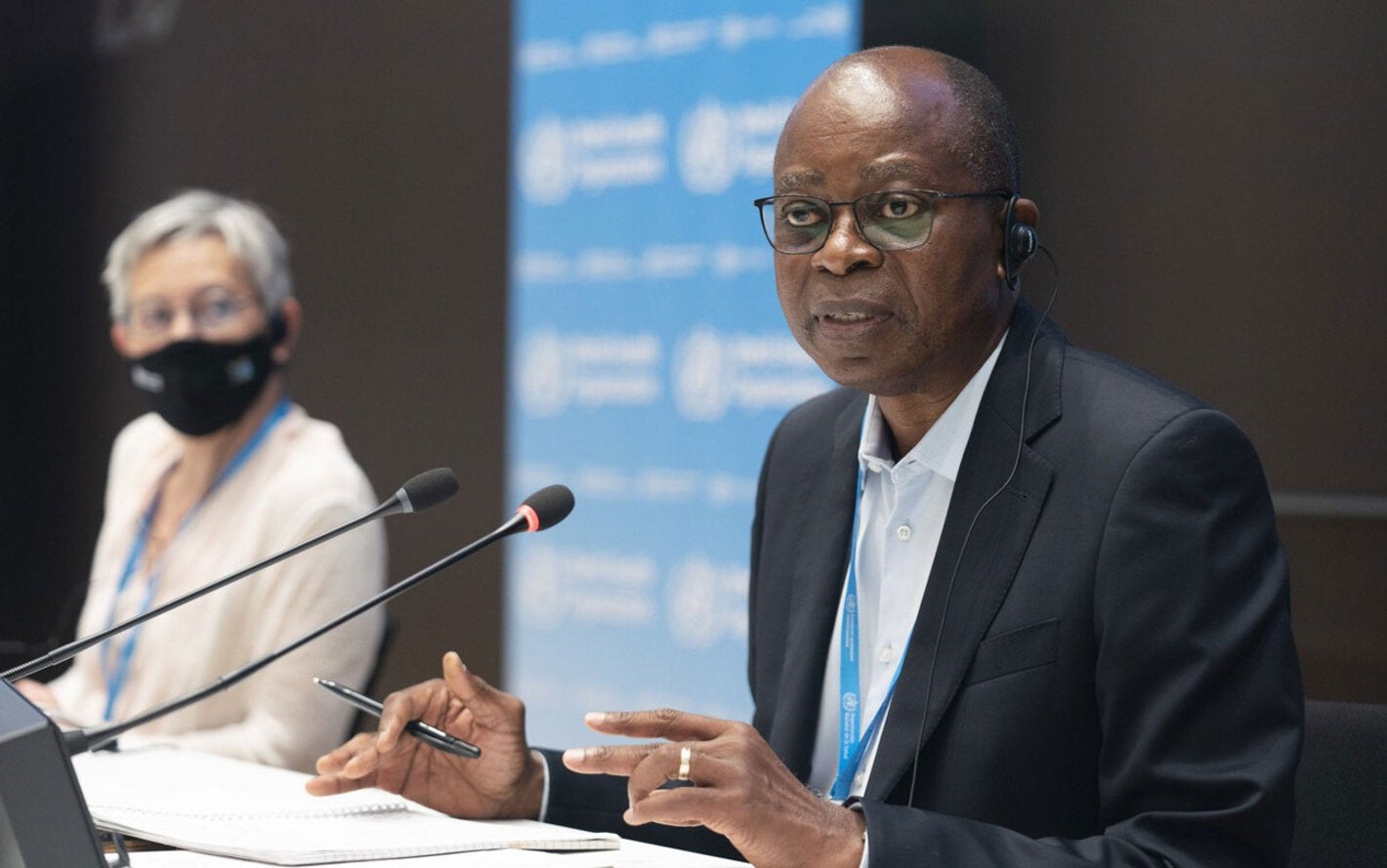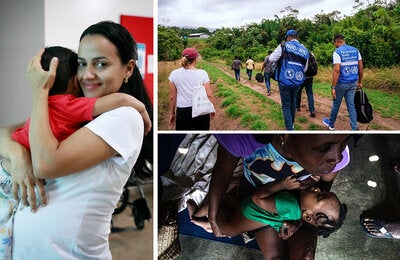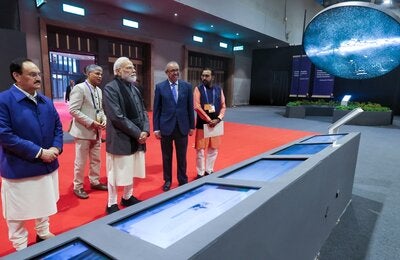
The WHO Director-General has the pleasure of transmitting the Report of the Meeting of the International Health Regulations (2005) (IHR) Emergency Committee regarding the multi-country monkeypox outbreak, held on 23 June 2022, from 12:00 to 17:00 Geneva time (CEST). The WHO Director-General concurs with the advice offered by the IHR Emergency Committee regarding the multi-country monkeypox outbreak and, at present, does not determine that the event constitutes a Public Health Emergency of International Concern (PHEIC).
Since 11 May 2022, the WHO Secretariat alerted the States Parties to the IHR in relation to this event, through postings on the Event Information Site (a secured platform established by the WHO Secretariat for information sharing with States Parties to the IHR). These postings aimed to raise awareness about the extent of the outbreak, inform readiness efforts, and provide access to technical guidance for immediate public health actions recommended by the WHO Secretariat.
Convening an IHR Emergency Committee signals an escalation of the level of alert for States Parties to the IHR and the international public health community, and it represents a call for intensified public health actions in response to this event.
The WHO Director-General is taking the opportunity to express his most sincere gratitude to the Chair, Vice-Chair, and Members of the IHR Emergency Committee, as well as to its Advisers.
Proceedings of the meeting
Members of and Advisers to the Emergency Committee were convened in person (Chair and Vice-Chair) and by teleconference, via Zoom.
The WHO Secretariat welcomed the participants. The Representative of the Office of Legal Counsel briefed the Members and Advisers on their roles and responsibilities and identified the mandate of the Emergency Committee under the relevant articles of the IHR. The Ethics Officer from the Department of Compliance, Risk Management, and Ethics provided the Members and Advisers with an overview of the WHO Declaration of Interests process. The Members and Advisers were made aware of their individual responsibility to disclose to WHO, in a timely manner, any interests of a personal, professional, financial, intellectual or commercial nature that may give rise to a perceived or actual conflict of interest. They were additionally reminded of their duty to maintain the confidentiality of the meeting discussions and the work of the Committee. Each Member and Adviser was surveyed. No conflicts of interest were identified.
The Principal Legal Officer then facilitated the election of officers of the Committee, in accordance with the rules of procedures and working methods of the Emergency Committee. Dr Jean-Marie Okwo-Bele was elected as Chair of the Committee, Professor Nicola Low as Vice-Chair, and Dr Inger Damon as Rapporteur, all by acclamation. The meeting was handed over to the Chair who introduced the objectives of the meeting: to provide views to the WHO Director-General on whether the event constitutes a public health emergency of international concern, and if so, to provide views on potential temporary recommendations.
Presentations
The WHO Director-General joined by video and welcomed the participants, welcoming the Committee’s advice on the event.
The WHO Secretariat presented the global epidemiological situation, highlighting that since the beginning of May 2022, 3040 cases have been reported to WHO from 47 countries. Transmission is occurring in many countries that have not previously reported cases of monkeypox, and the highest numbers of cases are currently reported from countries in the WHO European Region. Initial cases of monkeypox, detected in several countries in different WHO Regions, had no epidemiological links to areas that have historically reported monkeypox, suggesting that undetected transmission might have been ongoing for some time in those countries. The majority of confirmed cases of monkeypox are male and most of these cases occur among gay, bisexual and other men who have sex with men in urban areas and are clustered social and sexual networks.
The clinical presentation is often atypical, with few lesions localized to the genital, perineal/perianal or peri-oral area that do not spread further, and an asynchronous rash that appears prior to the development of a prodromal phase (i.e. lymphadenopathy, fever, malaise). There have been few hospitalizations to date, and one death in an immunocompromised individual was reported. Some preliminary research has estimated that the reproduction number (R0) to be 0.8 and, among cases who identify as men who have sex with men, to be greater than 1. The mean incubation period among cases reported is estimated at 8.5 days, ranging from 4.2 to 17.3 days (based on 18 cases in Netherlands). The mean serial interval is estimated at 9.8 days (95% CI 5.9-21.4 day, based on 17 case-contact pairs in the United Kingdom). To date, 10 cases of infection have been reported among health care workers, of which at least nine were non-occupational.
Representatives of Canada, the Democratic Republic of the Congo, Nigeria, Portugal, Spain, and the United Kingdom updated the Committee on the epidemiological situation in their countries and the current response efforts.
The WHO Secretariat then presented the draft “WHO Strategic Plan for the Containment of the Multi-Country Monkeypox Outbreak.” The plan emphasized that a strengthened, agile, and collaborative approach must be adopted, with a particular focus on raising awareness and empowering affected population groups to adopt safe behaviors and protective measures based on the risks they face, and on stopping further spread of monkeypox within those population groups.
The WHO Secretariat also presented their technical guidance, offered to countries in support of their efforts in responding to this event, and revolving around: enhanced surveillance; isolation of cases; contact identification and monitoring; strengthened laboratory and diagnostic capacities; clinical management and infection prevention and control measures within health care and community settings, including care pathways; engagement with affected population groups and effective communication to avoid stigmatization; robust care pathways, including the use of medical countermeasures under collaborative research frameworks, using standardized data collection tools to rapidly increase evidence generation on efficacy and safety of these products.
Deliberative session
Following the presentations session, the Committee reconvened in a closed meeting to examine the questions in relation to whether the event constitutes a PHEIC or not, and if so, to consider the Temporary Recommendations, drafted by the WHO Secretariat in accordance with IHR provisions. At the request of the Chair, the WHO Secretariat reminded the Committee Members of their mandate and recalled the definition of a PHEIC under the IHR: an extraordinary event, which constitutes a public health risk to other States through international transmission, and which potentially requires a coordinated international response.
The Committee discussed key issues related to the outbreak, including: current observations of plateauing or potential downward trends in case numbers in some of the countries experiencing outbreak early on; the need for further understanding of transmission dynamics; the challenges related to contact tracing, particularly because of anonymous contacts, and potential links to international gatherings and LGBTQI+ Pride events conducive for increased opportunities for exposure through intimate sexual encounters; the need for continuous evaluation of interventions that appear to have had an impact on transmission; the identification of key activities for risk communications and community engagement, working in close partnership with affected communities to raise awareness about personal protective measures and behaviours during upcoming events and gatherings; the need to evaluate the impact of different interventions, including the evaluation of vaccination strategies implemented by certain countries in response to the outbreak, and the availability and equity in access and licensing of medical countermeasures.
The Committee was concerned about the potential for exacerbation of the stigmatization and infringement of human rights, including the rights to privacy, non-discrimination, physical and mental health, of affected population groups, which would further impede response efforts. Additionally, for the protection of public health, some Members of the Committee expressed the views that laws, policies and practices that criminalize or stigmatize consensual same-sex behaviour by state or non-state actors create barriers to accessing health services and may also hamper response interventions.
Additional knowledge gaps and areas of uncertainty, for which more information is needed rapidly to support a more comprehensive assessment of the public health risk of this event, include: transmission modes; full spectrum of clinical presentation; infectious period; reservoir species and potential for reverse zoonoses; the possibility of virus; and access to vaccines and antivirals and their efficacy in humans.
The Committee recognized that monkeypox is endemic in parts of Africa, where it has been noted to cause disease, including fatalities, for decades, and that the response to this outbreak must serve as a catalyst to increase efforts to address monkeypox in the longer term and access to essential supplies worldwide.
Conclusions and advice
The Committee noted that many aspects of the current multi-country outbreak are unusual, such as the occurrence of cases in countries where monkeypox virus circulation had not been previously documented, and the fact that the vast majority of cases is observed among men who have sex with men, of young age, not previously immunized against smallpox (knowing that vaccination against smallpox is effective in protecting against monkeypox as well). Some Members suggested that, given the low level of population immunity against pox virus infection, there is a risk of further, sustained transmission into the wider population that should not be overlooked. The Committee also stressed that monkeypox virus activity has been neglected and not well controlled for years in countries in the WHO African Region.
The Committee also noted that the response to the outbreak requires collaborative international efforts, and that such response activities have already started in a number of high-income countries experiencing outbreaks, although there has been insufficient time to have evaluated the effectiveness of these activities.
While a few Members expressed differing views, the committee resolved by consensus to advise the WHO Director-General that at this stage the outbreak should be determined to not constitute a PHEIC.
However, the Committee unanimously acknowledged the emergency nature of the event and that controlling the further spread of outbreak requires intense response efforts. The Committee advised that the event should be closely monitored and reviewed after a few weeks, once more information about the current unknowns becomes available, to determine if significant changes have occurred that may warrant a reconsideration of their advice.
The Committee considered that the occurrence of one or more of the following should prompt a re-assessment of the event: evidence of an increase in the rate of growth of cases reported in the next 21 days, both among and beyond the population groups currently affected; occurrence of cases among sex workers; evidence of significant spread to and within additional countries, or significant increases in number of cases and spread in endemic countries; increase in number of cases in vulnerable groups, such as immunosuppressed individuals, including with poorly controlled HIV infection, pregnant women, and children; evidence of increased severity in reported cases (i.e. increased morbidity or mortality and rates of hospitalization; evidence of reverse spillover to the animal population; evidence of significant change in viral genome associated with phenotypic changes, leading to enhanced transmissibility, virulence or properties of immune escape, or resistance to antivirals, and reduced impact of countermeasures; evidence of cluster of cases associated with clades of greater virulence detected in new countries outside West and Central African countries.
Finally, the Committee advised the WHO Director-General that countries, in the spirit of Article 44 of the IHR, should collaborate with each other and with WHO in providing the required assistance through bilateral, regional or multilateral channels, and should follow the guidance provided by WHO (see Monkeypox).



